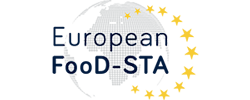The EuFooD-STA Webinar "Analysis of chemical trace contaminants in foods: performance and limits" took place 15 December 2016 at 4 PM (CET). You can download a pdf-version of the presentation and view the recording below.
Chemical contaminants are present at very low levels (traces, ultra-traces) in food commodities. The European regulation is continuously evolving on this issue, including more and more contaminants or lowering their regulated levels in feed and food. Examples of chemical contaminants under regulation are pesticides, veterinary drug residues, mycotoxins, persistent organic pollutants and migrants from packaging. Monitoring plans or control plans are performed annually by state members with a view of either assessing chemical risks for the consumers or checking the conformity of their foodstuffs. In addition, stakeholders and companies in the food industry are in demand of regular controls of their raw matter and production, to anticipate unexpected contaminations and manage chemical hazards. So, analytical results provided by the laboratories need to be reliable as false results may have health or economic impacts.
We will give in this webinar an overview of the steps required to succeed in analyzing chemical contaminants in foodstuffs and the main questions to be answered for choosing proper conditions for the analysis. Performance criteria used to assess the quality of analytical results will be also discussed (such as limits of detection and quantification, precision, trueness). Some examples of main difficulties encountered that may hinder the analysis or bias the results will be detailed on illustrative chemical contaminants (matrix effects will be particularly discussed as they are common for food samples). We will conclude with some insights of the future challenges to chemical food safety, such as the identification of new chemical hazards, the analysis of mixture of contaminants present in the same food commodity, and the development of non-targeted analytical approaches. This webinar should be useful for participants to understand and discuss an analytical result related to chemical contaminants in food.
Since 2009, Valérie Camel is Professor of Analytical Chemistry and Food Safety in the Department of Food Science and Technology of AgroParisTech, a French Graduate Institute in Science and Engineering (France), member of the Paris-Saclay University; she was previously Assistant Professor in the same institute since 1996. In the research team “Analytical engineering for food quality” which is part of GENIAL Research Joint Unit (INRA, AgroParisTech), she develops research projects related with the analysis of chemical contaminants in foodstuffs as well as the understanding of their fate (formation, dissipation, degradation) through the food chain. She has developed an expertise on the analysis of chemical contaminants in foodstuffs (with special emphasis on low-solvent extraction techniques), such as pesticides, mycotoxins, migrants from the packaging as well as toxic neoformed compounds. Formation of polycyclic aromatic hydrocarbons during coffee roasting and fate of ochratoxin A upon digestion are among recent studies. Since 2009 she is also member of the Expert Committee related to chemical contaminants in foodstuffs at the French National Agency for Safety (Anses). Professor Camel is also co-director of three Master’s degree programs: “Food safety risk analysis”, “Toxicology, environment, human health” and “From assessment to management of toxicological risks for ecosystems and human health”.
You can download the pdf of the presentation below.
